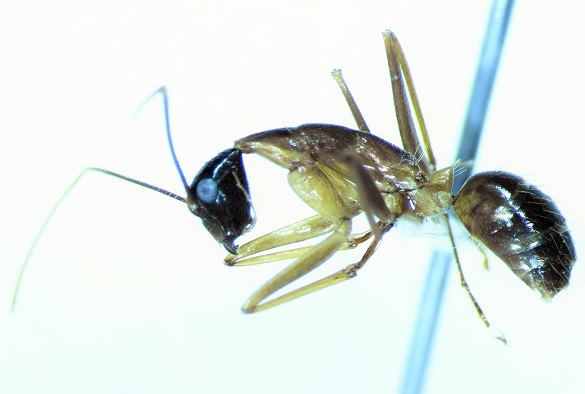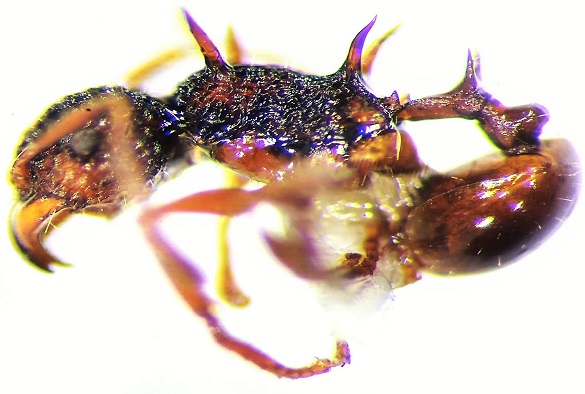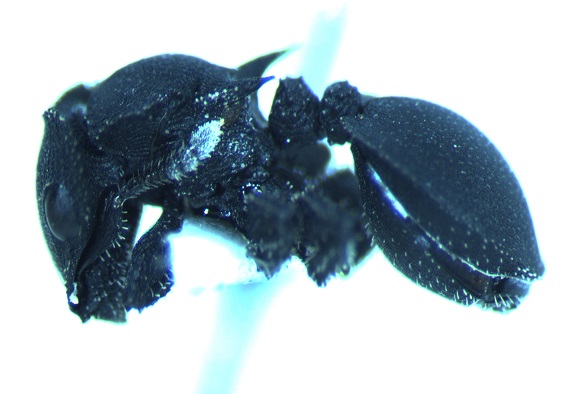Study finds darker ants dominate the rainforest canopy
Published on

A new study exploring the differences in the colour of ants, led by University of Liverpool researchers, has revealed that ants found in the rainforest canopy are on average twice as dark as ants found on or below the ground. The dark colouration is thought to benefit the ant in two ways: first by providing protection against harmful UV-B rays and second by reducing water loss in the drier canopy air.
Previous research by the University has revealed that patterns in ant colour across large geographical scales, over continents and mountain ranges, are influenced by the environment.
However, in a paper published in the Journal of Animal Ecology researchers show for the first time that differences in climate can also influence ant colour.
There can be huge differences in climatic variables in tropical rainforests between the forest floor and the canopy. For example in the canopy, 60 m above the forest floor, the maximum temperature can be up to 17oC higher, UV-B radiation can be up to four times greater and the drying power of the air can be twice as high compared with the forest floor.

Differences in climatic variables such as temperature, UV-B radiation and humidity can sometimes be more extreme than those observed across latitudes and elevations. What is surprising is that temperature does not appear to influence ant colour in tropical rainforest.
Ants should be paler where the temperature is higher to reflect the sun yet this is not what was found. Rather, the high UV-B rays and drier air in the canopy has a greater influence on ant colour.
Researchers from the University’s School of Environmental Sciences recorded the colour of 33,976 ants from 231 different morphospecies. The colour of each ant was recorded by eye using a standardised method. All ants were collected by researchers from four different levels (the subterranean layer, the ground, the understory and the canopy) within primary rainforest in Malaysian Borneo,

Stephanie Law, lead author of the study which was undertaken during her PhD with the University of Liverpool, said: “Many people assume that ants are all brown or black but that isn’t the case. Ants are actually very diverse in colour, ranging in shades of yellow, blue and red as well as brown and black.
“What’s interesting about this study is that it demonstrates that climatic variables can influence the relative abundance of ant species based on their colour at a much more localised scale than previously thought. These results help us to understand better the huge diversity of ant species found in tropical rainforests and how they are distributed.
"It also implies that any changes to the local climate could alter the success of particular ant species based on their colour. For example, if the removal of trees increases the amount of UV-B rays reaching the ground we may expect to see darker coloured ants dominate. This can have cascading effects on the ecosystem as different ants perform different functions. ”

The paper `Darker ants dominate the canopy: testing macroecological hypotheses for patterns in colour along a microclimatic gradient’ (doi: 10.1111/1365-2656.13110) is published in the Journal of Animal Ecology,